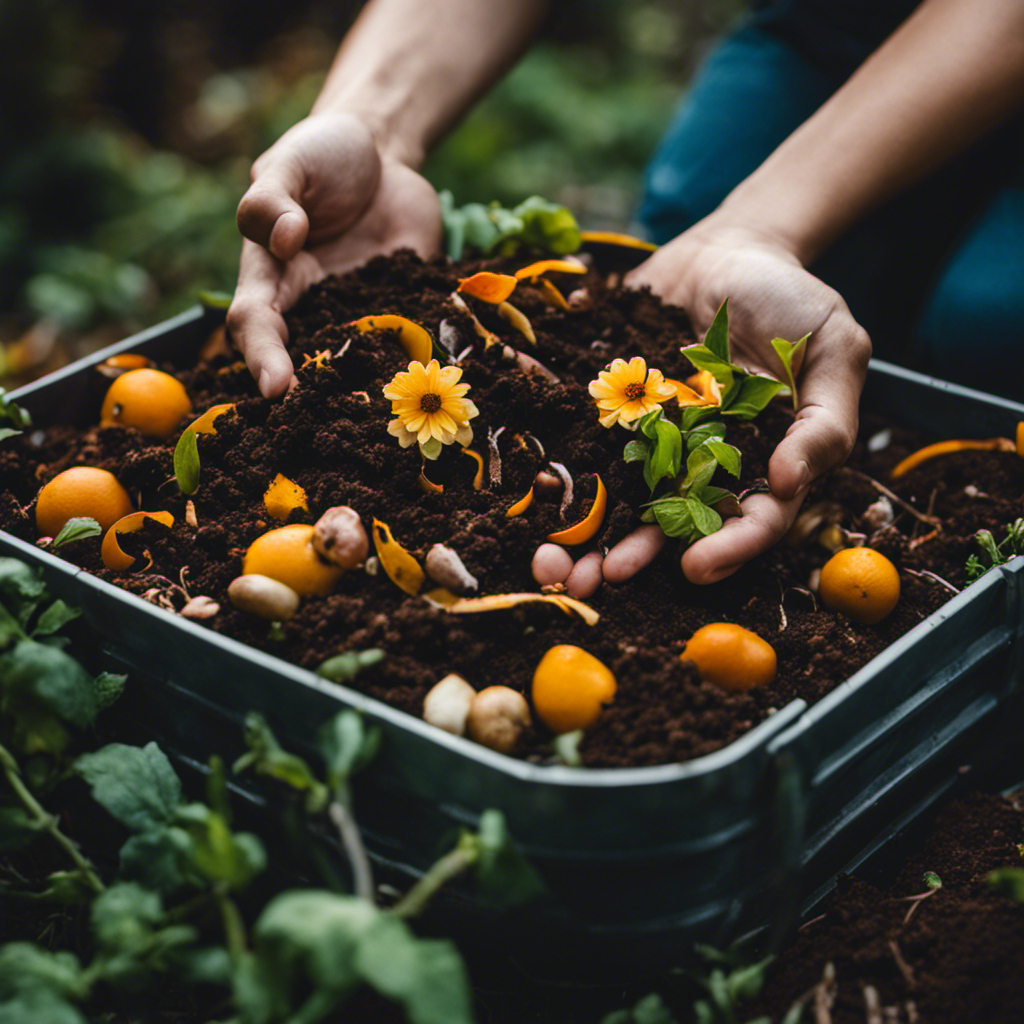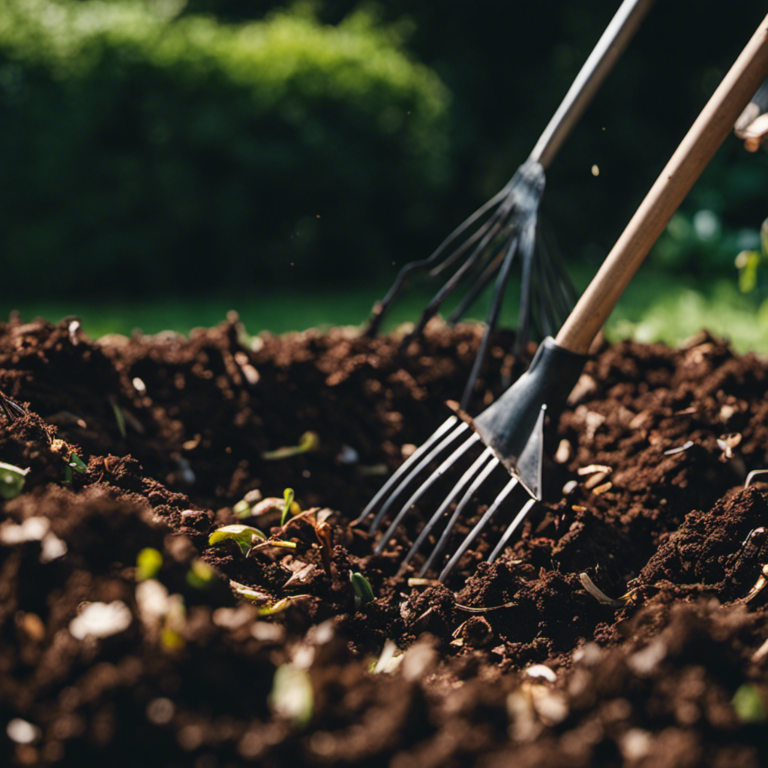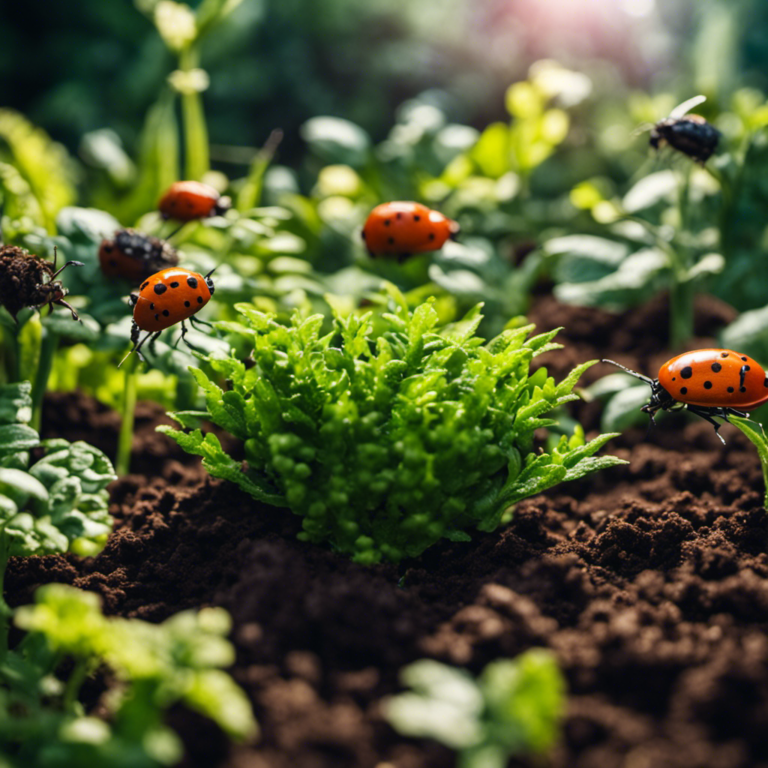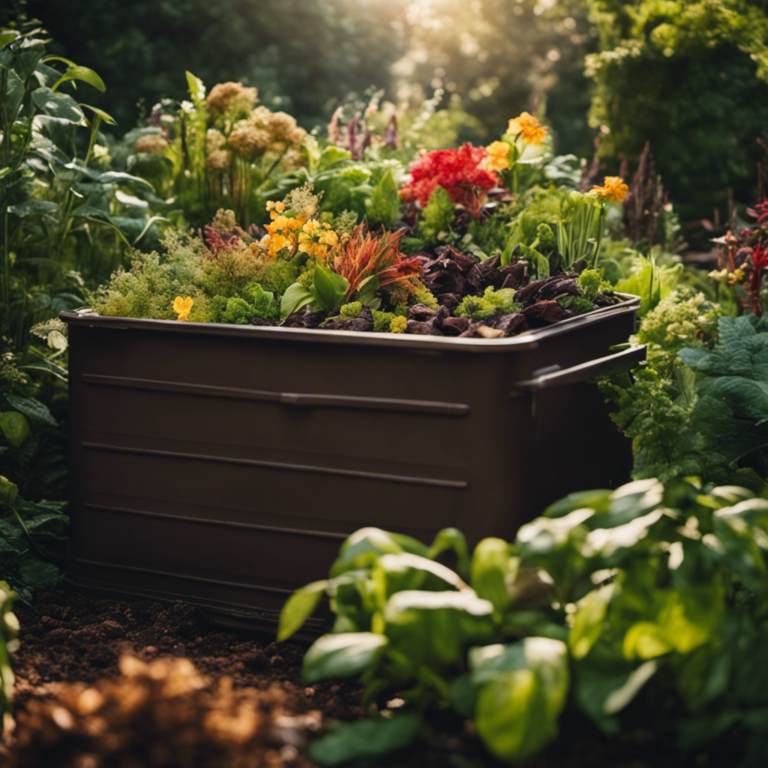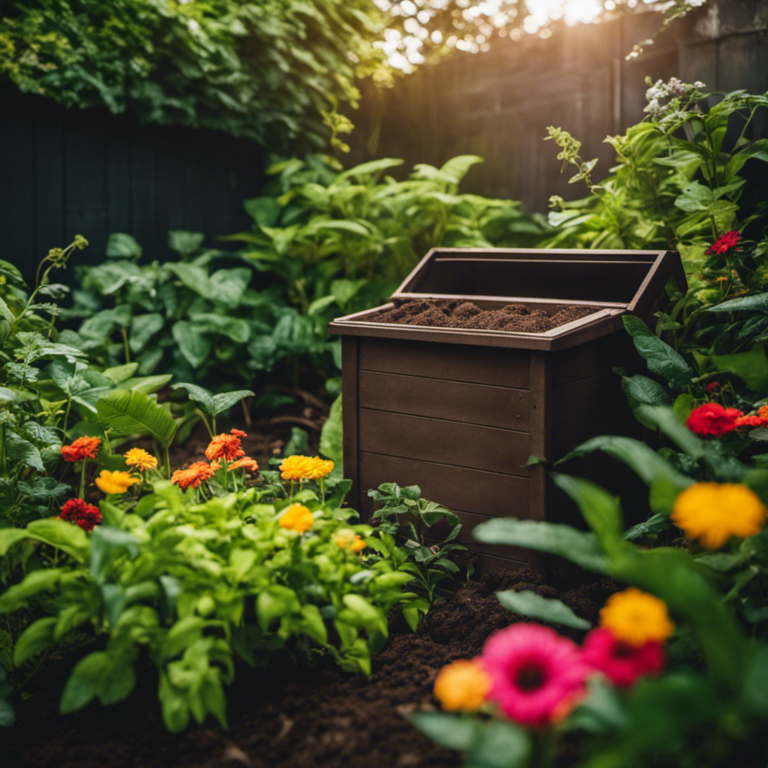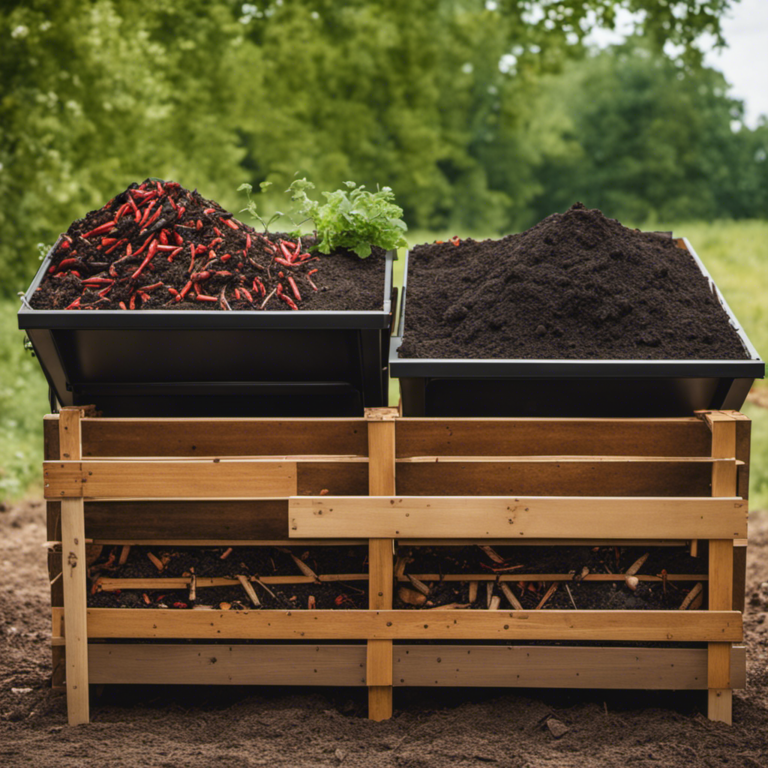As a beginner in the world of composting, I have discovered the beauty of simple organic techniques that not only benefit my garden but also the environment.
With the right tools and a little knowledge, anyone can start composting right at home.
In this article, I will guide you through the process, from choosing the perfect compost bin to maintaining and harvesting your own nutrient-rich compost.
Get ready to explore the world of organic composting and witness the flourishing of your garden!
Key Takeaways
Beginners can easily practice organic composting techniques, which offer numerous benefits. All you need are a few essential tools like a compost bin and simple ingredients such as kitchen scraps and yard waste. By following these steps, you can create nutrient-rich compost that will nourish your plants.
It’s important to note that composting is not only beneficial for your garden but also for the environment. By composting, you can reduce household waste by up to 30%, which helps alleviate strain on landfills and promotes a more sustainable lifestyle.
Start composting today and make a positive impact on the environment while enriching your garden with nutrient-rich compost.
Benefits of Organic Composting

Benefits of Organic Composting
As someone new to organic composting, I’ve discovered the many advantages that come from this simple yet effective practice. Organic composting not only helps the environment but also proves to be cost-effective. Let’s explore these benefits in more detail.
First and foremost, organic composting has a significant positive impact on the environment. By diverting organic waste from landfills, we can reduce the release of methane gas into the atmosphere. Methane is a potent greenhouse gas that contributes to climate change. Additionally, composting enriches the soil, providing essential nutrients for plants without the need for synthetic fertilizers. This promotes healthier plant growth and reduces the reliance on harmful chemical pesticides, which is beneficial for the environment.
Apart from its environmental impact, organic composting is also a cost-effective solution. Instead of buying expensive fertilizers and soil amendments, you can create your own nutrient-rich compost using kitchen scraps, yard waste, and other organic materials. This not only saves money but also reduces the dependence on manufactured products that may contain harmful chemicals or contribute to environmental degradation through their production and transportation.
Essential Tools for Composting
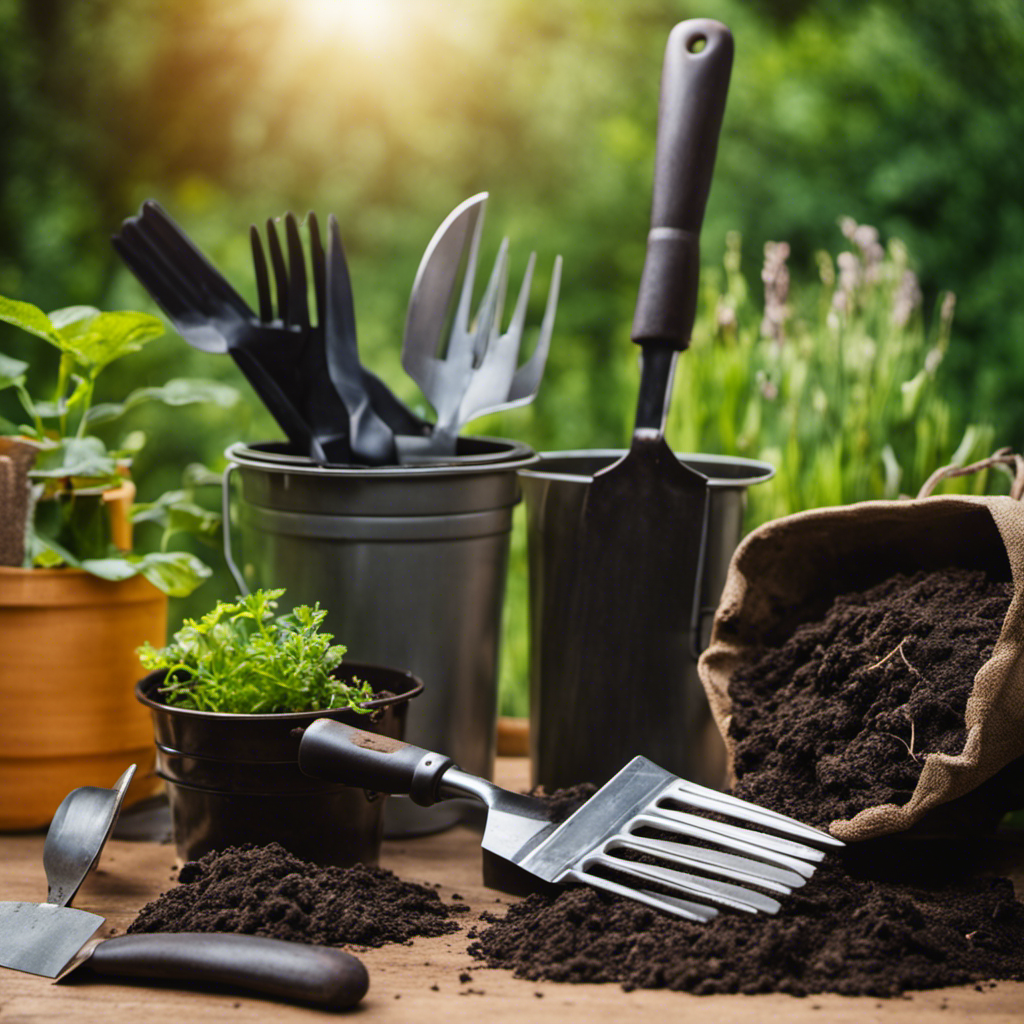
Essential Tools for Composting
To effectively engage in organic composting, I rely on a few essential tools for my composting process. These tools not only help me maintain a healthy and productive compost pile but also make the process easier and more efficient. Here are some of the essential tools I use:
Compost Bin Options: There are various options available for compost bins, including tumblers, bins, and homemade compost piles. It’s important to choose the right compost bin that suits your needs and space. Tumblers are great for small spaces and quick composting, while bins provide more capacity for larger amounts of organic waste. Homemade compost piles are a budget-friendly option and allow for more flexibility.
Composting Troubleshooting: Composting can sometimes be challenging, especially when faced with issues like foul odor, pests, or slow decomposition. Troubleshooting tools such as compost thermometers, moisture meters, and compost turners can help identify and address these problems. Compost thermometers help monitor the temperature of the compost pile, ensuring it stays within the optimal range for decomposition. Moisture meters help maintain the right moisture level, and compost turners help aerate the pile, promoting faster decomposition.
Choosing the Right Compost Bin

Choosing the Right Compost Bin
Selecting the right compost bin is a crucial step in organic composting. The type of bin you choose can greatly impact the success of your composting journey. Here are some options to consider:
-
Wire Mesh Bin: This bin is simple, affordable, and allows for good airflow and drainage. It’s also easy to assemble and disassemble, making maintenance a breeze.
-
Tumbling Bin: If you want to speed up the composting process, a tumbling bin is a great choice. It features a rotating drum that allows for easy mixing and aeration. It’s also compact and can be placed anywhere in your garden.
-
Wooden Bin: Wooden bins not only blend well with your garden surroundings but also provide good insulation. They’re sturdy and durable. However, it’s important to note that they may require additional maintenance to prevent rotting.
-
Plastic Bin: Lightweight and durable, plastic bins are a low-maintenance option. They’re easy to clean and come in various sizes and designs to suit different composting needs.
-
DIY Bin: If you prefer a more personalized touch, you can create your own compost bin using materials like wooden pallets or repurposed containers.
Remember, proper maintenance of your compost bin is key to a successful composting journey. Regular turning, monitoring moisture levels, and adding the right mix of greens and browns will ensure a healthy and productive compost pile.
Happy composting!
Simple Ingredients for Composting
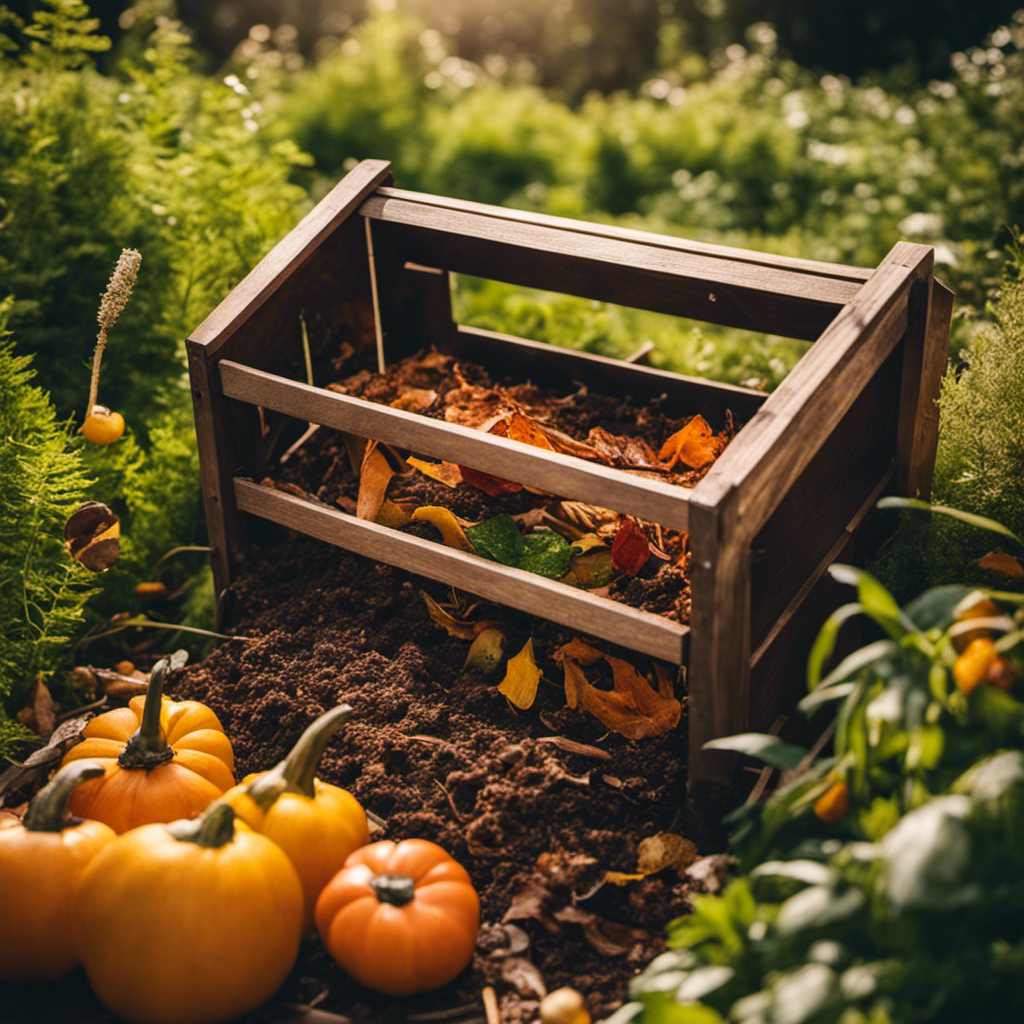
For successful composting, you need a combination of basic organic materials. These materials are essential for creating nutrient-rich compost that will benefit your plants and garden.
The composting process requires a balanced mix of green and brown materials.
Green materials include kitchen scraps like fruit and vegetable peels, coffee grounds, and grass clippings. These materials are rich in nitrogen and provide the necessary nutrients for the decomposition process.
On the other hand, brown materials are high in carbon and include items like dried leaves, straw, and shredded newspaper. They help create the right carbon-to-nitrogen ratio in your compost pile, allowing for efficient decomposition.
It’s important to avoid certain materials in the composting process, such as meat, dairy products, and oily foods, as they can attract pests or create unpleasant odors.
Maintaining and Harvesting Compost
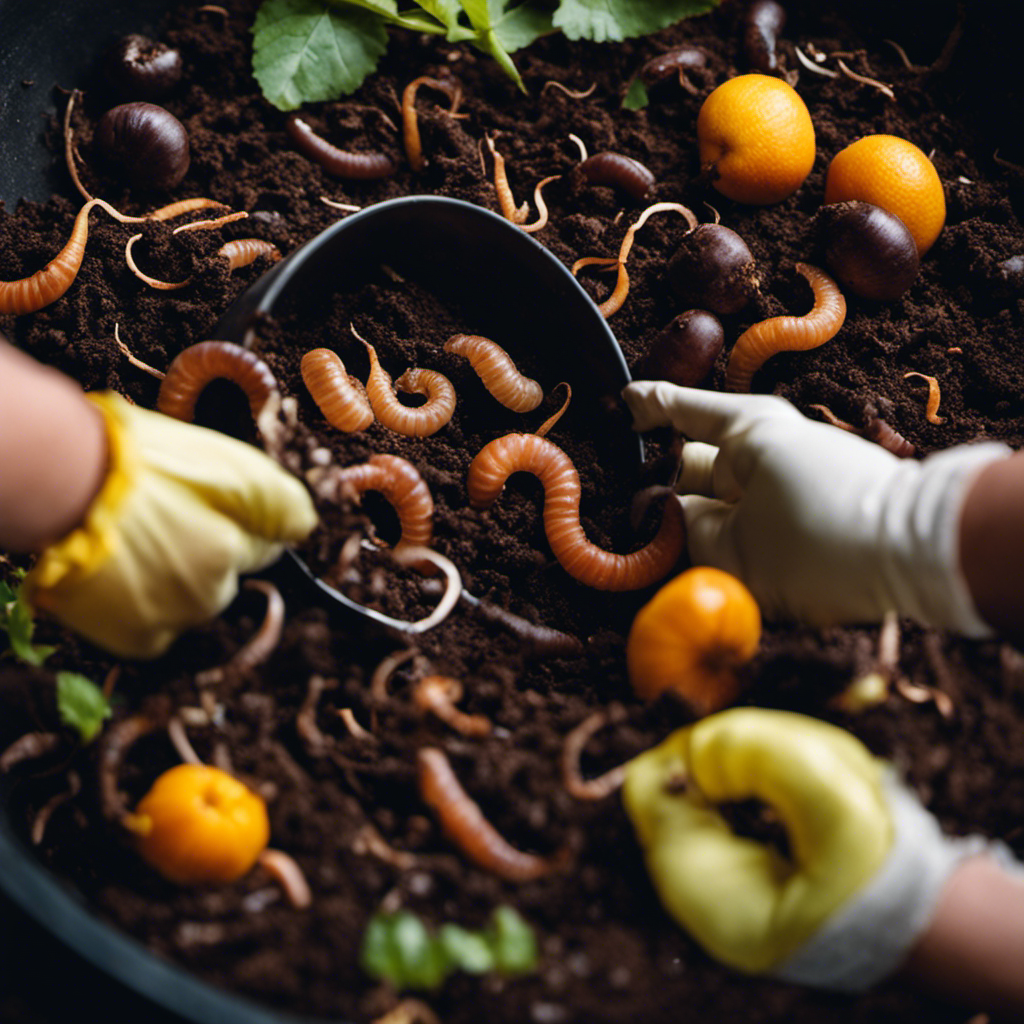
Maintaining and Harvesting Compost
Once you have set up your compost pile, it’s important to properly maintain and harvest the nutrient-rich compost. By following these simple tips, you can ensure that the composting process continues efficiently and effectively:
-
Regularly turn the compost pile: Every few weeks, use a pitchfork or compost turner to mix the materials thoroughly. This helps to aerate the pile and promote better decomposition.
-
Monitor moisture levels: The compost pile should be moist, but not overly wet. If it’s too dry, add some water. On the other hand, if it’s too wet, incorporate dry materials like leaves or newspaper to balance the moisture.
-
Troubleshoot any issues: If you notice an unpleasant smell or the compost isn’t breaking down, it may indicate a problem. Adjust the moisture levels, add more brown materials, or avoid adding certain items like meat or dairy to address the issue.
-
Harvesting the compost: When the compost is dark, crumbly, and has an earthy smell, it’s ready to be harvested. Use a garden fork or shovel to remove the finished compost from the bottom of the pile.
-
Try compost tea: Compost tea is a nutrient-rich liquid created by steeping compost in water. It serves as a natural fertilizer for plants. You can find various compost tea recipes online to experiment with.
Conclusion
Organic composting is a simple and beneficial practice for beginners. By using essential tools like a compost bin and incorporating simple ingredients such as kitchen scraps and yard waste, anyone can create nutrient-rich compost for their plants.
It’s worth noting that composting can reduce household waste by up to 30%, helping to alleviate strain on landfills and promote a more sustainable lifestyle.
Start composting today and make a positive impact on the environment!
